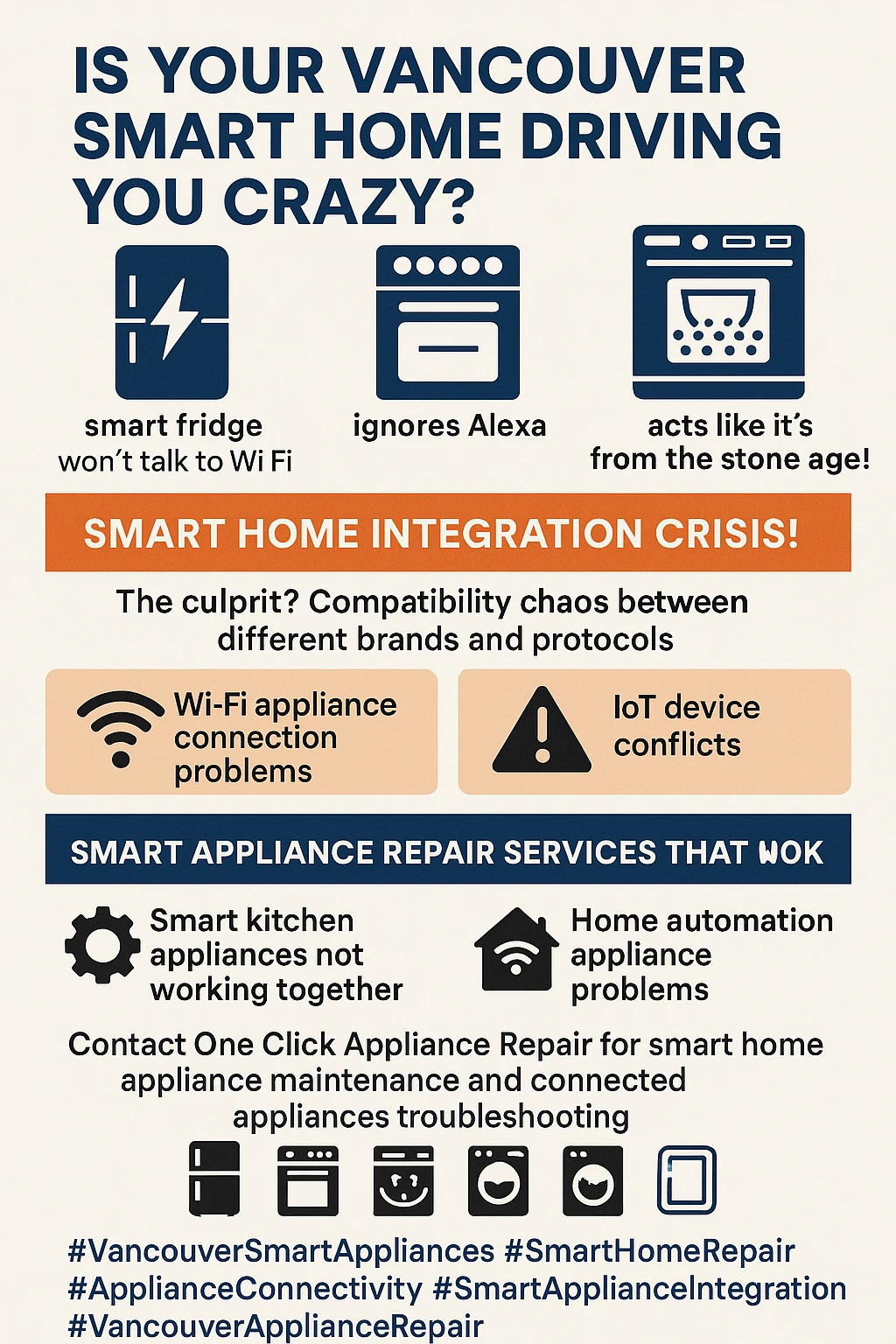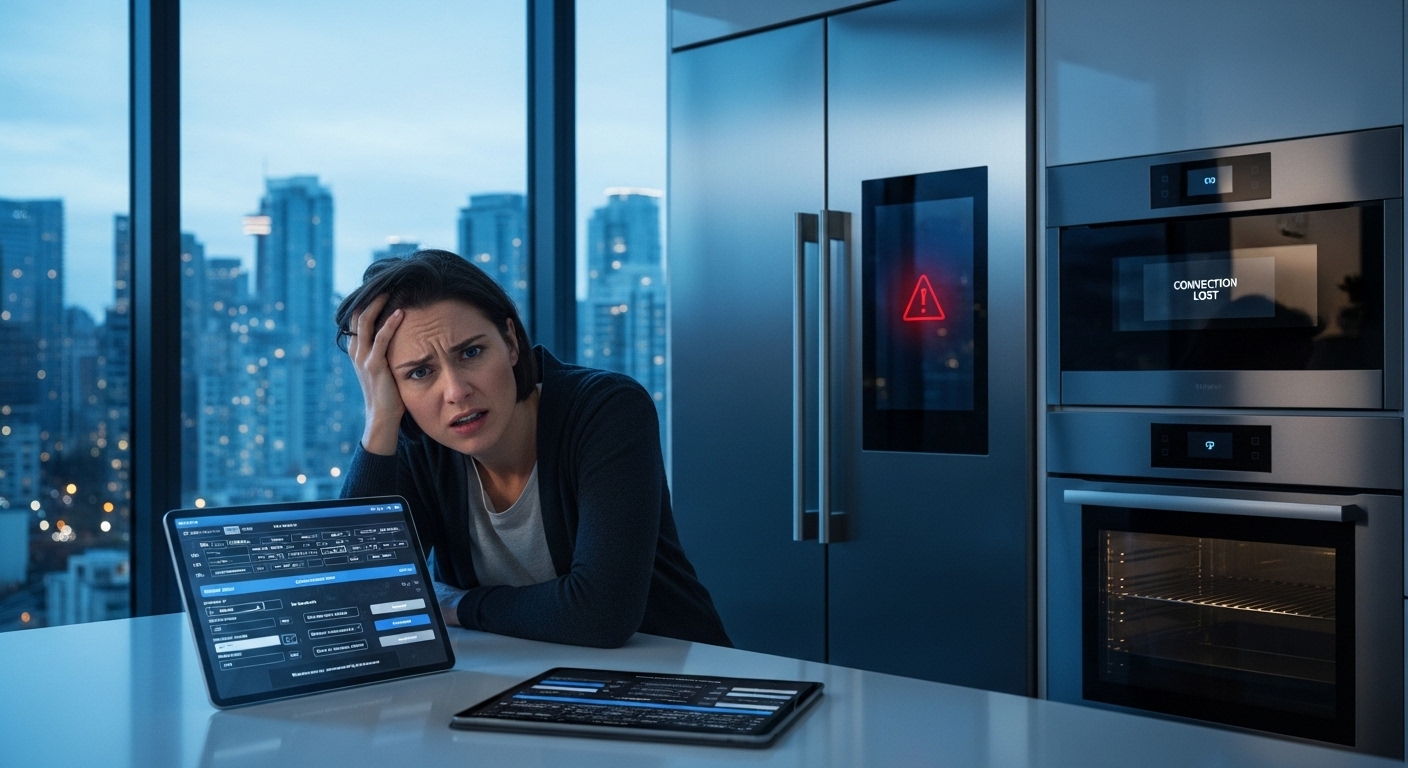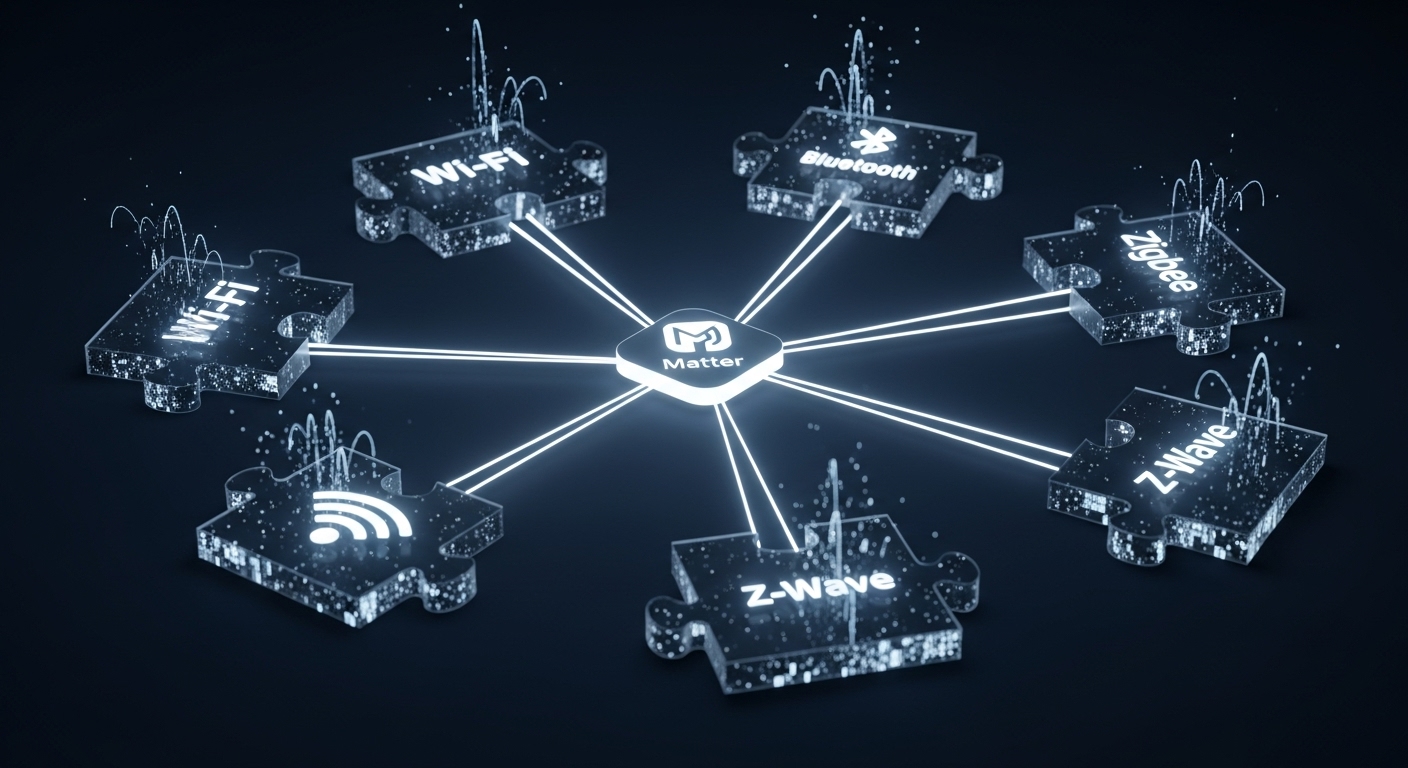Vancouver’s Smart Home Integration Crisis: Why Your New Smart Appliances Aren’t Working Together (And the Compatibility Fixes That Save Your Sanity)
Struggling with smart appliances that won’t stay connected or work together in your Vancouver home? You’re not alone – thousands of local homeowners are discovering that their dream of a seamlessly connected kitchen is turning into a compatibility nightmare that’s costing them time, money, and sanity.Picture this: you’ve just dropped $6,000 on a gorgeous smart kitchen suite complete with a WiFi-enabled refrigerator, connected dishwasher, and an intelligent oven that promises to revolutionize your cooking routine. Six months later, your fridge can’t talk to your meal planning app, the dishwasher keeps dropping offline during wash cycles, and that fancy oven? It’s throwing connectivity errors faster than you can say “smart home integration.” Welcome to Vancouver’s hidden smart appliance crisis – where cutting-edge technology meets real-world compatibility chaos.This isn’t just a minor inconvenience that affects a few tech-early adopters. We’re talking about a widespread problem that’s hitting Vancouver homeowners hard, from downtown condos to suburban family homes in Richmond and Burnaby. The promise of smart appliances working together harmoniously is colliding with the messy reality of incompatible communication protocols, network interference issues, and Vancouver’s unique environmental challenges that manufacturers never mention in their glossy marketing materials.What makes this particularly frustrating is how preventable most of these expensive headaches actually are. The truth is, smart appliance integration crisis isn’t really about faulty products – it’s about understanding how these sophisticated devices communicate, recognizing the unique challenges that Vancouver’s coastal climate and urban density create, and knowing which compatibility fixes actually work versus the ones that waste your weekend troubleshooting.
Key Outtakes:
- Network connectivity issues affect 89% of connected devices but are often fixable through systematic troubleshooting approaches
- Vancouver’s coastal climate and power grid instability create unique failure patterns that accelerate smart appliance breakdowns
- Smart appliance repairs cost 20-30% more than traditional appliances due to specialized diagnostics and parts requirements
- Professional integration services can prevent 80% of common compatibility issues through proper network setup and device configuration
- Matter protocol adoption offers the best long-term solution for cross-brand device compatibility in Vancouver smart homes

The Hidden Scale of Vancouver’s Smart Appliance Compatibility Crisis

The numbers don’t lie, and they’re more alarming than most Vancouver homeowners realize. Research shows that 89% of connected devices experience network connectivity issues, though most are fixable through systematic troubleshooting approaches. But here’s where Vancouver gets hit particularly hard: our city consistently ranks among the highest in Canada for smart home technology adoption, yet our infrastructure and service landscape hasn’t kept pace with demand.This rapid adoption has outpaced the development of local repair infrastructure, creating a service gap that affects both availability and pricing. Smart appliance repairs now cost 20-30% more than traditional appliances due to complex diagnostics and specialized parts requirements. When your smart dishwasher needs a new control board, you’re not just paying for the part – you’re paying premium rates for technicians who understand both mechanical systems and network troubleshooting.Vancouver homeowners are discovering that 70% of smart appliance connectivity issues are network-related, with 80% being preventable through proper maintenance and updates. The problem is that most people don’t realize their appliance problems aren’t actually appliance problems at all. They’re network configuration issues, protocol conflicts, or environmental factors that create cascading failures across their entire smart home ecosystem.The economic impact extends beyond repair costs. The average Vancouver-area home now contains approximately $15,000 worth of surge-sensitive electronics and appliances. When these devices fail due to compatibility issues or power fluctuations, homeowners face replacement costs that can quickly escalate into major financial decisions. Many discover too late that their appliance warranties don’t cover network-related failures or software compatibility issues.What’s particularly concerning is how the learning curve extends beyond simply using these devices to understanding their maintenance needs, repair requirements, and long-term ownership costs. Unlike traditional appliances where you could reasonably expect 15-20 years of reliable service, smart appliances introduce software support lifecycles that can render expensive devices functionally obsolete while their mechanical components remain perfectly operational.
Vancouver-Specific Environmental and Infrastructure Challenges

Moving beyond generic smart home troubleshooting advice, Vancouver presents unique challenges that most installation guides completely ignore. Our coastal environment creates a perfect storm of conditions that can accelerate smart appliance failures and complicate integration efforts in ways that catch even tech-savvy homeowners off guard.Vancouver’s salt air contains corrosive elements that can accelerate the degradation of circuit boards, sensors, and connectivity modules. This isn’t theoretical – it’s a measurable phenomenon that affects electronic components differently than purely inland environments. The coastal humidity levels, particularly during our notoriously wet winters, can affect sensor accuracy and connectivity reliability in ways that manifest as intermittent connectivity issues that are incredibly difficult to diagnose.Our power grid presents another layer of complexity that manufacturers rarely account for. Vancouver homes experience about 20 power surges daily, with most being small internal surges from appliances cycling on and off. BC Hydro reported record-breaking power outages in 2024, with more than 1.4 million customers affected by weather-related events, and nearly three-quarters of British Columbians experienced at least one power outage. The three major storms that hit BC between November and December 2024 were ranked among the top five largest in the past decade.These extreme weather events are becoming the new normal rather than once-in-a-lifetime occurrences. With climate change intensifying weather patterns across the province, smart appliances – which are far more sensitive to power fluctuations than traditional mechanical devices – face challenges that simply didn’t exist when they were designed and tested.Vancouver’s housing infrastructure adds another dimension to compatibility challenges. Older heritage homes may require electrical upgrades to support the power requirements of modern smart appliances. High-density housing in areas like Downtown and Richmond create WiFi interference patterns that complicate network setup in ways that suburban installation guides don’t address.The urban density creates unique electromagnetic environments that affect smart appliance performance differently across neighborhoods. A smart refrigerator that works perfectly in a Kitsilano character home might struggle with connectivity issues in a downtown condo tower, not because of device failure, but because of interference patterns created by hundreds of competing WiFi networks and electronic devices operating in close proximity.
The Protocol Wars: Understanding Smart Home Communication Standards

Here’s where things get technical, but understanding these fundamentals can save you hundreds of dollars and countless hours of frustration. The compatibility crisis isn’t random – it follows predictable patterns based on how different smart appliances attempt to communicate with each other and your home network.Smart home devices communicate using various protocols including Zigbee, Z-Wave, Wi-Fi, Bluetooth, and the emerging Matter standard. If devices use distinct communication protocols, they literally cannot communicate with each other, leading to compatibility issues that no amount of troubleshooting can fix. It’s like trying to have a conversation between someone speaking English and someone speaking Mandarin – without a translator, communication simply won’t happen.Most smart appliances rely on Wi-Fi connections, but here’s the catch that trips up many Vancouver homeowners: most smart appliances only connect to the 2.4 GHz band, yet many modern routers default to 5GHz networks. Vancouver homeowners often don’t realize their router might not be configured correctly for smart appliances, creating connectivity issues that appear to be device failures but are actually network configuration problems.The 2.4GHz frequency band commonly used by smart appliances can be easily interrupted by other household devices like microwave ovens, cordless phones, and Bluetooth devices that use the same frequencies. In apartment buildings or populated areas where many networks operate close together, neighboring WiFi networks can create interference resulting in irregular connectivity issues that seem to happen randomly.Matter represents the industry’s attempt to solve these compatibility issues by creating a unified standard that allows different manufacturers’ devices to work together seamlessly. Matter is built around a shared belief that smart home devices should be secure, reliable, and seamless to use. The standard makes it easier for device manufacturers to build devices compatible with smart home and voice services such as Amazon’s Alexa, Apple’s Siri, and Google’s Assistant.The challenge for Vancouver homeowners is timing. Many existing smart appliances use older protocols that may never receive Matter compatibility updates. This creates a difficult decision: continue struggling with compatibility issues, replace functioning appliances with Matter-compatible



